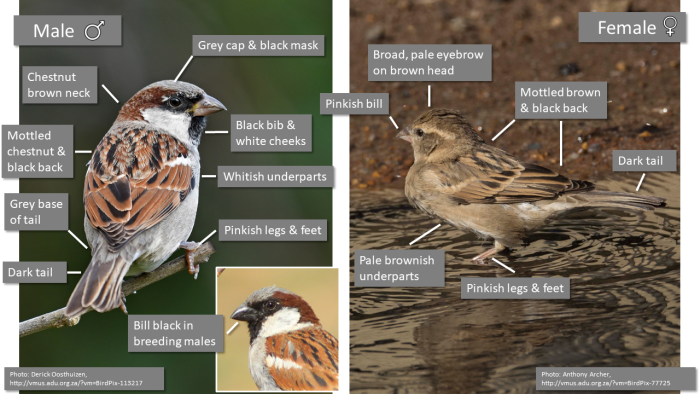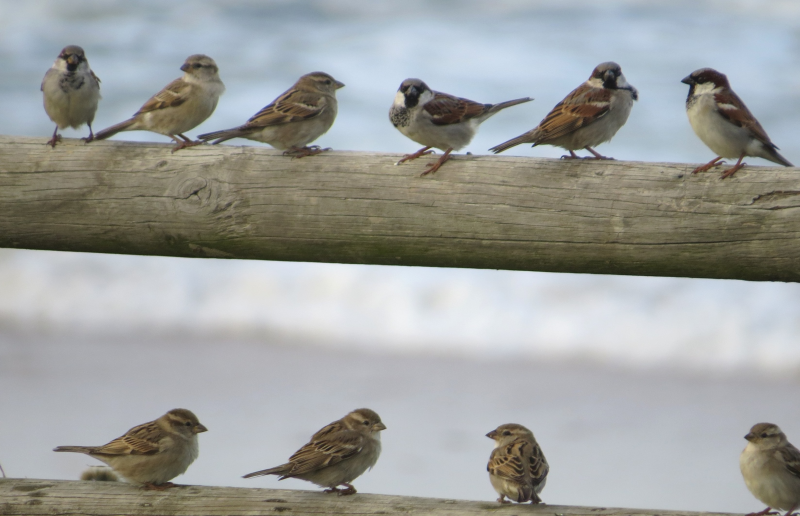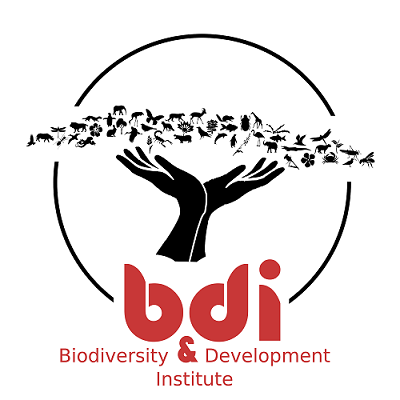Cover image by Gregg Darling – St Francis Bay – Eastern Cape – BirdPix 10073 House Sparrow
Identification
Females and young House Sparrows are pale brown and grey in colour, whereas the males have brighter black, white, and chestnut brown markings. The male has a grey cap, black face mask and chestnut brown neck. Its back and wings are chestnut and black in colour.

Distribution
House Sparrows are native to Eurasia, but was introduced to Australasia, the Americas, and Africa. It is one of the most widespread species in the world. In Africa, it was introduced along the Nile River and separately from southern DRC through to Zambia, Angola, and South Africa. In South Africa it is locally common, especially in urban and suburban areas.

Habitat
The House Sparrow is strongly associated with human habitation. They prefer to live in urban or rural settings. They can be found in widely varied habitats and climates, but they typically avoid extensive woodlands, grasslands, and desert habitats that are far away from human development.

Behaviour
The House Sparrow is a very social and gregarious bird. When foraging for food, it often forms flocks with other bird species.

They have a varied diet which includes seeds, nectar, fruit and invertebrates. House Sparrows most frequently pluck food items from the ground, but they also glean insects from plants or hawk small prey in the air.
In towns and cities, House Sparrows often scavenge for food in garbage containers and they often congregate near restaurants with outdoor areas and supermarkets to feed on leftover food and crumbs.

House Sparrows are monogamous and form a pair bond for life. The male and the female construct the nest. It consists of a ball-shaped structure with an entrance on the side or on the top. Usually, the nest is made of grass, feathers, wool, and other soft material. They typically place the nest in a building, under eaves or in a thatched roof. They may also use a tree or an unused swallow nest.

Further Resources
Species text from the first Southern African Bird Atlas Project (SABAP1), 1997.
Virtual Museum (BirdPix > Search VM > By Scientific or Common Name).
Other common names: Huismossie (Afrikaans); Jolwane (Swazi); Enzunge (Kwangali); Moineau domestique (French); Haussperling (German).
Recommended citation format: Loftie-Eaton M and Daniel KA 2022. House Sparrow Passer domesticus. Bird Feeder Project. Biodiversity and Development Institute. Available Online at http://thebdi.org/2022/11/15/house-sparrow-passer-domesticus/

